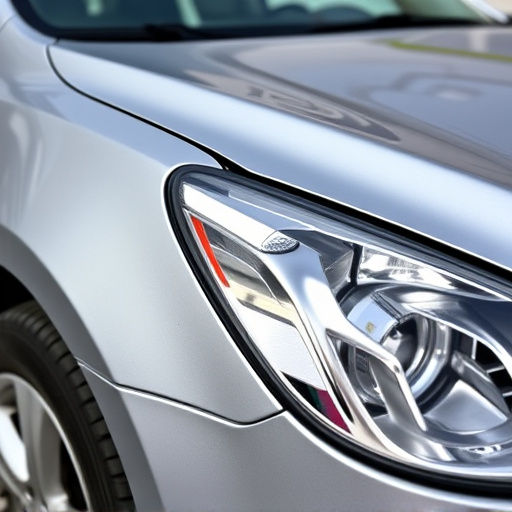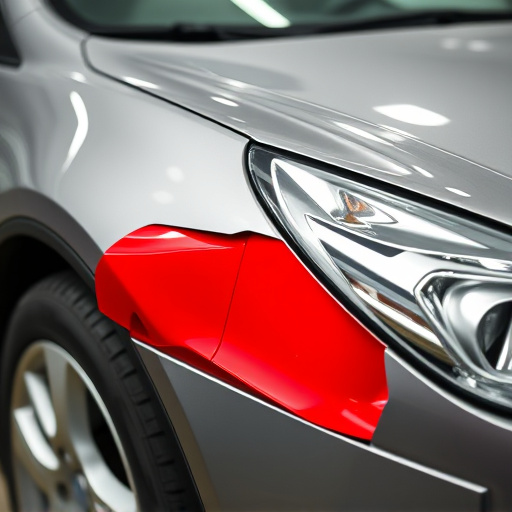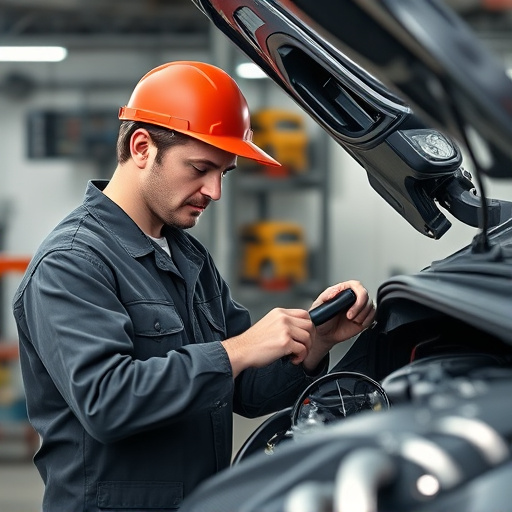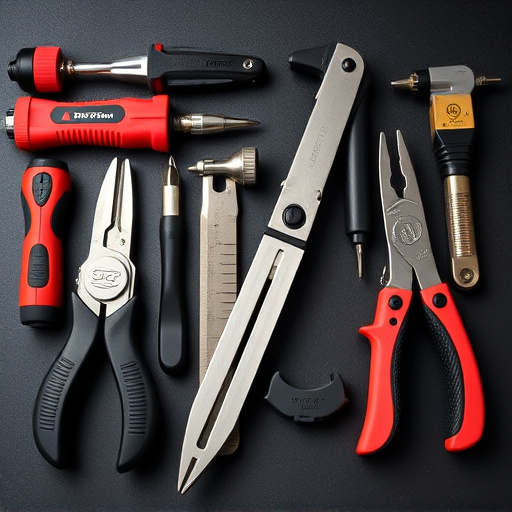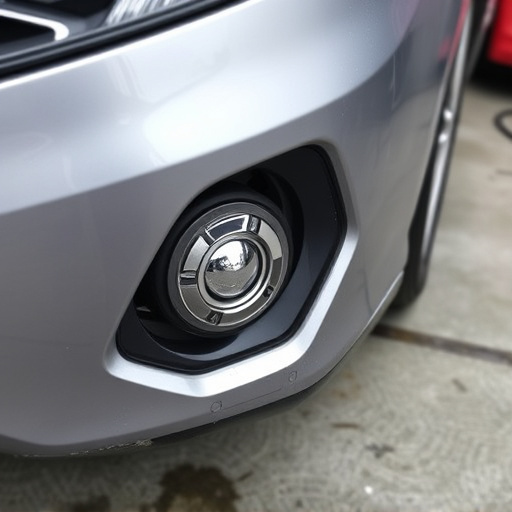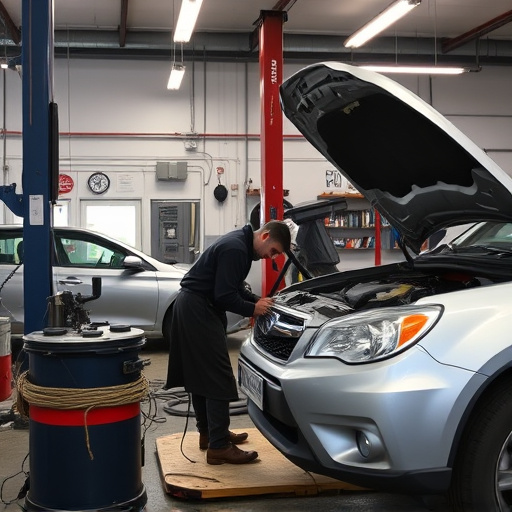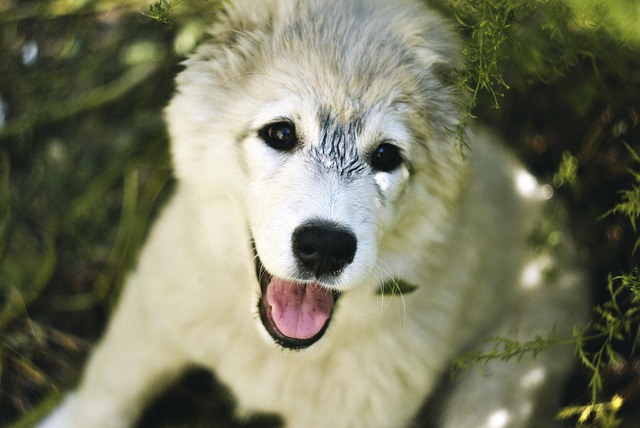Water-based auto paint, a sustainable alternative in automotive industry, offers environmental benefits with reduced volatile organic compounds (VOCs) and improved air quality. Its composition includes binders, pigments, water, and additives for enhanced properties. Despite longer drying times, adhesion issues on certain surfaces, and lower durability, it provides excellent coverage and versatility. Technicians should master application techniques like spray painting with appropriate tools to ensure even distribution and smooth finish during auto maintenance.
In today’s market, understanding water-based auto paint is crucial for technicians aiming to deliver top-notch finishes. This versatile paint type has revolutionized the automotive industry with its environmental friendliness and performance. This article delves into the essential aspects of water-based auto paint, including its composition, advantages over traditional paints, and effective application techniques. By exploring these key areas, technicians can maximize efficiency and produce outstanding results.
- Understanding the Composition of Water-Based Auto Paint
- Advantages and Disadvantages Compared to Traditional Paints
- Application Techniques and Tools for Optimal Results
Understanding the Composition of Water-Based Auto Paint

Water-based auto paint has gained significant popularity in the automotive industry due to its numerous environmental and performance benefits. Unlike traditional solvent-based paints, water-based formulations are more eco-friendly, offering reduced volatile organic compound (VOC) emissions and easier disposal. This shift towards sustainability is a key aspect that car repair shops and auto body services are embracing.
Comprending the composition of this innovative paint is crucial for technicians in car bodywork services. Water-based auto paint typically consists of a binder, pigments, solvents (water being the primary one), and various additives. The binder, often acrylic or polyurethane, provides adhesion and film formation. Pigments contribute to the final color, while solvents facilitate application and drying. Additives play diverse roles, enhancing flow, levelling, durability, and resistance to fading, ensuring superior results in auto body services.
Advantages and Disadvantages Compared to Traditional Paints

Water-based auto paint has emerged as a popular choice among technicians for several reasons. One of its key advantages is environmental friendliness; it produces minimal volatile organic compounds (VOCs) compared to traditional paints, making it a more sustainable option. This characteristic also translates into better air quality during application, offering technicians a healthier working environment. Moreover, water-based paints are generally easier to clean up, requiring only soap and water, which can be particularly beneficial in auto body restoration and tire services settings where thorough cleaning is essential.
Despite these advantages, water-based paint does have its drawbacks when compared to traditional formulas. Drying times can be longer, which may slow down the car body restoration process. Additionally, certain types of surfaces might not adhere as well to water-based paint, requiring pre-treatment or specialized techniques. Technicians should also note that while water-based paints offer excellent coverage and are versatile for various projects, they may not provide the same level of durability and chip resistance as some traditional paints, especially in high-wear areas like wheel wells and fenders.
Application Techniques and Tools for Optimal Results
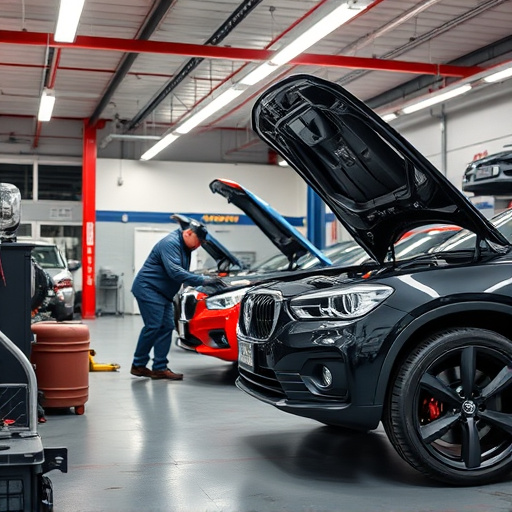
When applying water-based auto paint, technicians must master various techniques and select appropriate tools to achieve optimal results. This involves understanding the unique properties of water-based paint, which offers excellent coverage, fast drying times, and low odor compared to traditional oil-based paints. Techniques such as spray painting with airless or conventional guns provide even distribution of the paint, ensuring a smooth finish.
For precise and controlled application, especially in complex areas like car scratch repair, technicians can use smaller tools like brushes or rollers. Auto body services often benefit from these methods for detailed work in tight spaces. Maintaining proper pressure and technique during spray painting is crucial to avoid overspray and ensure the paint adheres well to the surface during auto maintenance.
Water-based auto paint is a game-changer for technicians, offering both advantages like reduced odor and improved environmental friendliness, as well as challenges such as specific application requirements. Understanding its composition, embracing innovative tools, and mastering application techniques are key to achieving optimal results with this eco-friendly option. By delving into these aspects, technicians can enhance their skills in working with water-based auto paint, ensuring superior finishes that cater to modern consumers’ preferences and environmental concerns.
